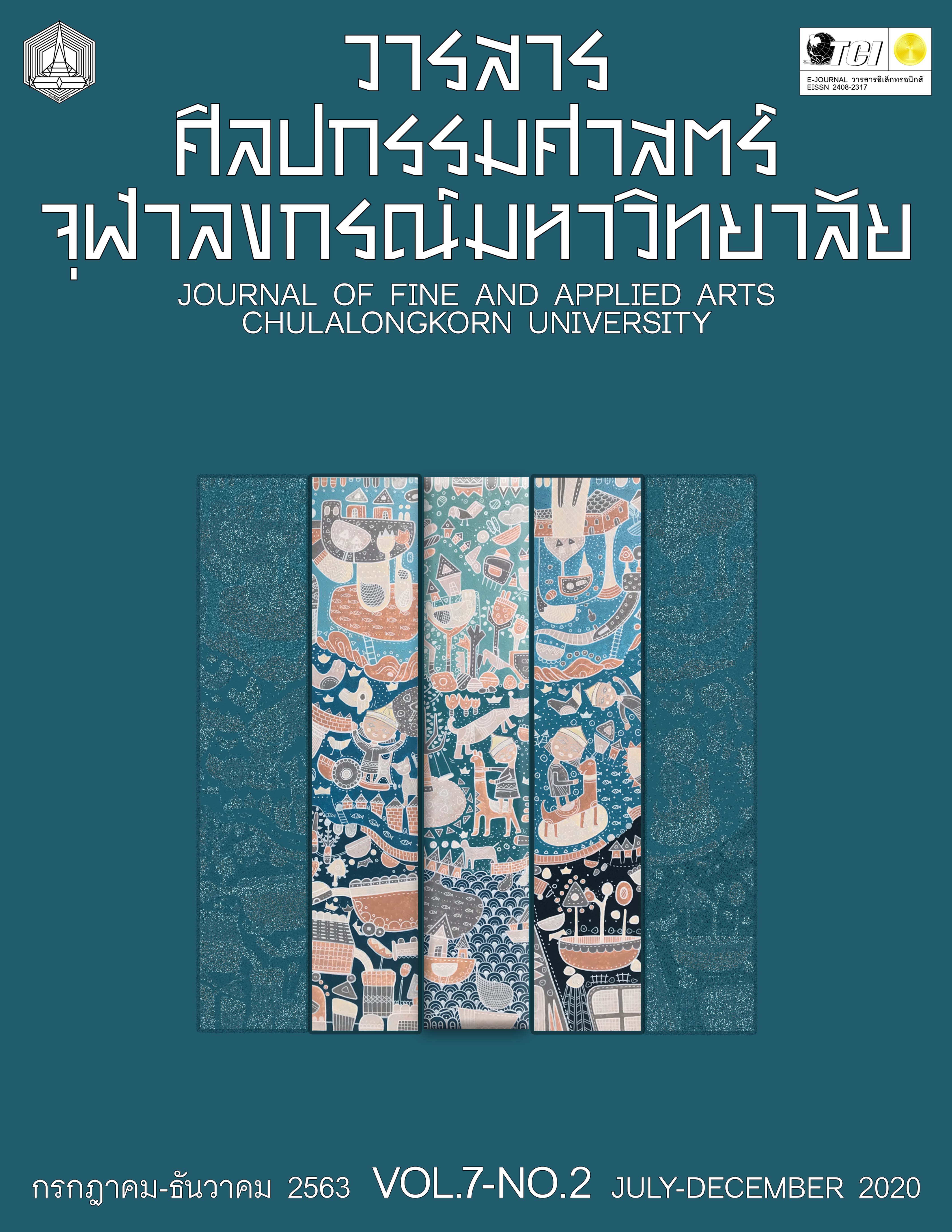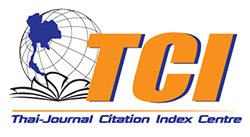อุเละห์นบี: ดนตรีสรรเสริญศาสดามูฮัมหมัดของมุสลิมนิกายซูฟีย์ในภาคกลางของประเทศไทย
คำสำคัญ:
อุเละห์นบี, มูโหลด, มุสลิมซูฟีย์กอดิรียะฮ์, กลองรำมะนาบทคัดย่อ
บทความวิจัยฉบับนี้มีจุดมุ่งหมายเพื่อศึกษาองค์ความรู้ด้านวัฒนธรรมดนตรีมุสลิมนิกายซูฟีย์ในพื้นที่ภาคกลางของประเทศไทย ผ่านการแสดงอุเละห์นบี ซึ่งเป็นเครื่องมือสำคัญในการอธิบายปรากฏการณ์การดำรงอยู่ทางสังคม ประวัติศาสตร์ และการผสมผสานทางวัฒนธรรมดนตรีและศาสนาในสังคมไทย
ผลจาการศึกษาพบว่า แช็คมูฮัมหมัดอาลี ชุกรีย์ หรือโต๊ะกีแซะฮ์ (พ.ศ. 2391- 2475) ผู้นำมุสลิมสายซูฟีย์กอดิรียะห์เป็นผู้ริเริ่มให้มีการแสดงอุเละห์นบี ในพิธีกรรมมูโหลด (เมาลิด) ซึ่งจัดขึ้นในวันขึ้น 1 ค่ำ เดือนรอบีอุ้ลอาวัรของทุกปีตามปฏิทินอิสลาม ประพันธ์บทร้องและทำนองโดยตวนฆูรู หมิง บินอัลฮัจญี อับดุลเลาะห์ อัซสยามี (อามีน โตลอยเกตุ) การแสดงอุเละห์นบีเป็นรูปแบบของวัฒนธรรมมลายูดั้งเดิม ซึ่งได้รับเอาวัฒนธรรมไทยเข้าไปผสมผสาน โดยเปลี่ยนรูปแบบของทำนอง แต่ยังคงบทร้องเป็นภาษามลายู ตามฉันทลักษณ์แบบกลอนมลายูที่เรียกว่า “บัรซันญีนาซัม” ในการขับร้องอุเละห์นบีมีการเอื้อนทั้งในแบบมลายูและการเอื้อนแบบไทย รวมไปถึงบทร้องที่เป็นภาษามลายูแต่ขับร้องด้วยทำนองแบบไทย ทำให้เกิดเป็นลักษณะการเอื้อนที่มีรูปแบบเฉพาะตัวของการขับร้องแบบมุสลิมไทยภาคกลาง นอกจากนี้ ยังพบการผสมผสานทางวัฒนธรรมดนตรีของหน้าทับกลองที่เกิดจากการปรับเข้าหากันของหน้าทับกลองรำมะนา และหน้าทับเพลงภาษาแบบไทย พลวัตของอุเละห์นบียังส่งผลให้เพลงพิธีกรรมนี้มีความสมบูรณ์ในด้านศาสนาและวัฒนธรรม ถือเป็นสัญลักษณ์ทางชาติพันธุ์ที่เชื่อมโยงมุสลิมไทยสายซูฟีย์กอดิรียะฮ์เชื้อสายมลายูในภาคกลางเข้าไว้ด้วยกัน
เอกสารอ้างอิง
คมลักษณ์ ไชยยะ. “แช็คมูฮัมหมัดอาลี ชุกรีย์ : พิธีกรรมความเชื่อของชาวมุสลิมภูเขาทอง จังหวัดพระนครศรีอยุธยา.”
รายงานการวิจัย, มหาวิทยาลัยราชภัฏพระนครศรีอยุธยา, 2560.
ซาลีฮะ มูซอ. “วิเคราะห์วัฒนธรรมมลายูในปันตนมุขปาฐะปาตานี.” รายงานการวิจัย, กรมส่งเสริม
วัฒนธรรม, กระทรวงวัฒนธรรม, 2547.
ดาวูด อิบนี่อับดุลเลาะห์. ชีวประวัติและผลงานของบรมครูนามอุโฆษ แช็คมูฮัมหมัดอาลี ชุกรี่. เอกสารอัด
สำเนา, 2546.
นักชาย จิเมฆ. “หน้าทับกลองรำมะนาที่ใช้ในการแสดงอุเละห์นบี.” สัมภาษณ์โดย จักรพงษ์ กลิ่นแก้ว.
พฤศจิกายน 2562.
นิรันดร์ ขันธวิธิ. “การศึกษาเปรียบเทียบความเชื่อและการปฏิบัติทางศาสนาของชาวมุสลิมในจังหวัด
พระนครศรีอยุธยา.” วิทยานิพนธ์ระดับปริญญามหาบัณฑิต, มหาวิทยาลัยมหิดล, 2542.
วิชา เชาว์ศิลป์. “ทำนองเพลงลำตัดและเพลงพื้นบ้านอื่น ๆ ที่ปรากฏในลำตัด.” รายงานการวิจัย, สถาบัน
ราชภัฏจันทรเกษม, 2543.
สมเด็จพระเจ้าบรมวงศ์เธอ กรมพระยาดำรงราชานุภาพ. สาส์นสมเด็จ. พระนคร : องค์การค้าของคุรุสภา,
เสาวนีย์ จิตต์หมวด. วัฒนธรรมอิสลาม. กรุงเทพฯ : กองทุนสง่า รุจิระอัมพร, 2535.
Bhabha, Homi K. The Location of Culture. London: Routledge, 1994.
ดาวน์โหลด
เผยแพร่แล้ว
ฉบับ
ประเภทบทความ
สัญญาอนุญาต
ลิขสิทธิ์ของบทความเป็นของเจ้าของบทความ บทความที่ได้รับการตีพิมพ์ถือเป็นทัศนะของผู้เขียน
กองบรรณาธิการไม่จำเป็นต้องเห็นด้วยและไม่รับผิดชอบต่อบทความนั้น






